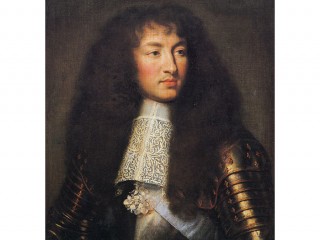
Charles Le Brun biography
Date of birth : 1619-02-24
Date of death : 1690-02-22
Birthplace : Paris, France
Nationality : French
Category : Arts and Entertainment
Last modified : 2011-02-04
Credited as : Artist painter, decorator and draftsman, Louis XIV style
The French painter, decorator and draftsman Charles Le Brun served as administrator of painting and the decorative arts under King Louis XIV.
Between 1661 and 1683 Charles Le Brun was virtually dictator of all the arts in France except architecture, and he imposed a unified standard of academic performance upon all the artists who wished to enjoy official recognition. This standard served the monarchy incomparably well in its need for expressive propaganda. The Louis XIV style, formulated by Le Brun, was of a technically high order, though somewhat grandiose and ponderously uniform by today's standards. Through it, Paris replaced Rome as the artistic capital of Europe, and the maxim of Jean Baptiste Colbert, the first minister, that "it is by the dimensions of monuments that one measures kings" was fulfilled.
Born in Paris, Le Brun was the son of a sculptor. After his apprenticeship to the decorator Francois Perier, Le Brun enjoyed successively the protection of Chancellor Seguier, cardinals Richelieu and Mazarin, and the regent, Anne of Austria. In Rome (1642-1646) Le Brun studied under Nicolas Poussin and digested the Roman baroque style of Pietro da Cortona.
Le Brun was one of the 12 founders of the Royal Academy of Painting and Sculpture in 1648, and his ascendant
authority in that official organization made him eligible in 1661 to become director of art works at the Chateau of Vaux-le-Vicomte, being constructed by the minister of finance, Nicolas Fouquet. Louis XIV, who deeply resented the opulent grandeur of this country house, dismissed Fouquet and appropriated his artistic team for use in the embellishment of the palace of Versailles. Scarcely an item of decoration for any royal dwelling was executed between 1661 and 1683 which was not conceived by Le Brun and carried out under his direction by a host of artists and craftsmen, and no painting was regarded as official without his sanction.
In 1662 Le Brun was ennobled. In 1663 he was made chancellor for life of the academy, keeper of the Royal Collections, and director of the Gobelins manufactory. In 1666 he organized the French Royal Academy in Rome. On the death of Colbert in 1683 Le Brun assumed the director-ship of the academy, but the new first minister, Louvois, gradually caused Le Brun to be superseded by Pierre Mignard, though he tactfully retained Le Brun, until his death, as first painter to the King. Le Brun spent his last years brooding over this seeming injustice and painting religious works which reflect the excessive piety of the aged Louis XIV under the influence of Madame de Maintenon (the Life of Christ series).
In spite of Le Brun's pronouncements favoring the eclectic academicism of the Bolognese baroque painters and his rigid support of the "ancients" (classical art, Raphael, and Poussin) over the "moderns" (the colorists, Titian, and Peter Paul Rubens), his real artistic preference was naturalism. His equestrian portrait of Chancellor Seguier (1661) reveals the harmonious French blending of northern physiognomical realism and heroic stateliness.
















